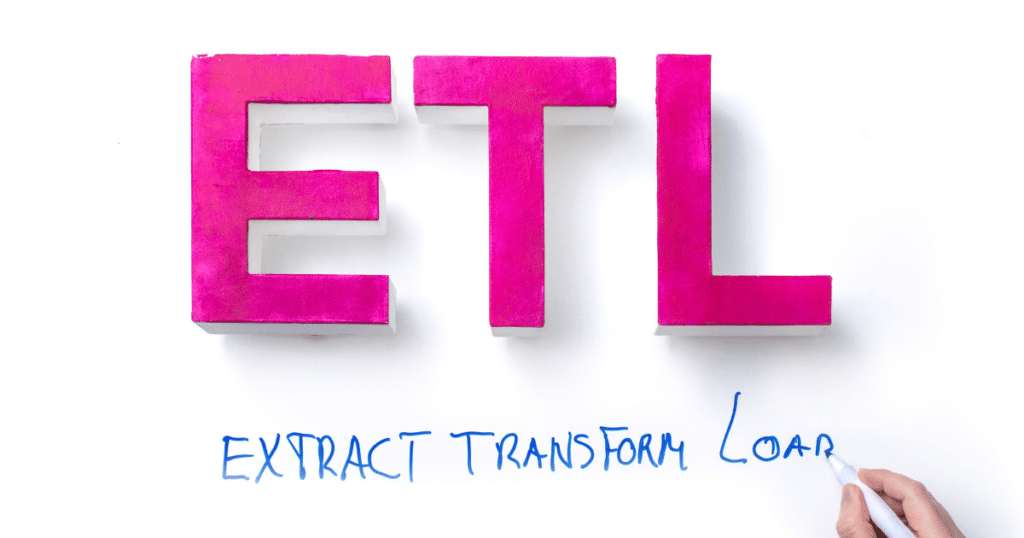In the intricate world of data processing, two prominent techniques stand out: ETL (Extract, Transform, Load) and UL (Unknown – Assuming ELT, Extract, Load, Transform). The primary difference between these two lies in their order of operations and their application in data management.
This blog will delve into the nuances of ETL vs UL, exploring how each technique processes data and their respective advantages in different business contexts.
Understanding ETL
ETL has been a standard data processing technique since the 1970s, crucial for managing data across multiple repositories. The ETL process involves extracting raw or unstructured data from various sources like SaaS applications, websites, and databases.
This data is then transformed on a secondary server into a common format and finally loaded into a target database or warehouse. ETL is particularly effective for complex, compute-intensive transformations and is best suited for smaller data volumes due to its longer load times.

ETL Process Breakdown
- Extract: Data is gathered from multiple sources.
- Transform: Data undergoes transformation in a staging area.
- Load: Transformed data is loaded into the target system for analysis.
ETL is ideal for scenarios requiring significant data structuring, strict data governance, and where data needs to be cleansed before storage.
Exploring UL (Assuming ELT)
UL or ELT, a more recent variant of ETL, is gaining popularity with the shift to cloud-based infrastructures. In ELT, the data extracted from various sources is loaded directly into a data warehouse or mart, and the transformation happens within these storage solutions.
This method is advantageous for handling large volumes of data, as it supports both structured and unstructured data types. The absence of a staging area in ELT allows for more flexible and faster data processing.
ELT Process Breakdown
- Extract: Data is pulled from different sources.
- Load: Data is directly loaded into the storage system without prior transformation.
- Transform: Transformation occurs in the target system, allowing for real-time, flexible data analysis.
ELT is especially beneficial for large-scale data projects requiring quick processing and flexibility in transformation.
Key Differences and Considerations
- Processing Speed and Volume: ETL is more time-consuming, making it less suitable for large data volumes. In contrast, ELT can handle large data volumes more efficiently due to its simultaneous loading and transformation capability.
- Cost Implications: ETL systems are generally more expensive to manage due to their complexity and the need for server infrastructure for data transformation. ELT, being cloud-based, offers lower maintenance costs and scalability.
- Data Governance and Security: ETL provides more security as it complies with standards like GDPR, HIPAA, and CCPA, making it ideal for sensitive data processing. ELT poses more challenges in data governance and quality control due to its open acceptance of all data types.
Deciding between ETL and UL (ELT) depends on the specific needs of an organization, such as data volume, processing speed, cost considerations, and security requirements. ETL remains a strong choice for structured data processing and compliance-driven projects, while ELT is better suited for large-scale, flexible data handling in modern, cloud-based environments.
As the data landscape continues to evolve, understanding these techniques is crucial for any data-driven organization looking to harness the full potential of their data assets.
Key Takeaways
- ETL vs UL (ELT) Distinction: ETL and UL (assuming ELT) differ primarily in their data processing sequence, with ETL focusing on transforming data before loading, while ELT loads data first before transforming it.
- ETL’s Strengths: ETL is ideal for smaller data sets and scenarios requiring stringent data governance and pre-storage cleansing.
- Advantages of ELT: ELT is more suited for large-scale data processing, offering flexibility and quicker data handling due to simultaneous loading and transformation.
- Cost and Complexity Considerations: ETL tends to be more expensive and complex, whereas ELT offers cost-effectiveness and simpler maintenance, particularly in cloud-based environments.
Data Governance and Security: ETL provides better compliance with data security standards, making it suitable for sensitive data, whereas ELT poses more challenges in data governance and quality control.
About Shinydocs
Shinydocs automates the process of finding, identifying, and actioning the exponentially growing amount of unstructured data, content, and files stored across your business.
Our solutions and experienced team work together to give organizations an enhanced understanding of their content to drive key business decisions, reduce the risk of unmanaged sensitive information, and improve the efficiency of business processes.
We believe that there’s a better, more intuitive way for businesses to manage their data. Request a meeting today to improve your data management, compliance, and governance.
